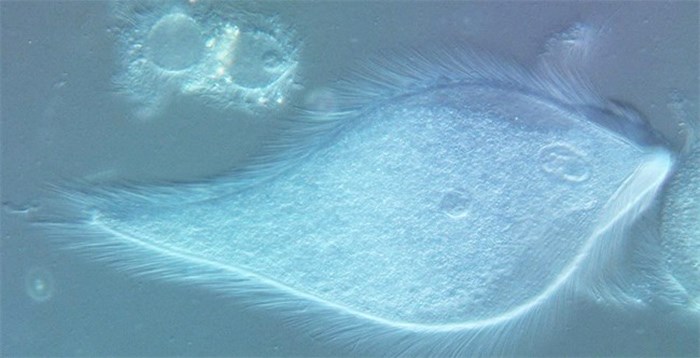 Ppearti, one of three new species of microbe found in the guts of termites that have been named after members of the Canadian prog-rock band Rush, is shown in this handout photo. THE CANADAIN PRESS/HO-UBC Science
Ppearti, one of three new species of microbe found in the guts of termites that have been named after members of the Canadian prog-rock band Rush, is shown in this handout photo. THE CANADAIN PRESS/HO-UBC Science
VANCOUVER - What do a trio of Canadian rock icons have in common with microbes living in the guts of termites?
Researchers at the University of British Columbia say the tiny organisms have long, hair-like flagella and bob about like the members of the prog-rock band Rush.
Now, three new species of microbe have been named after the band's members; singer Geddy Lee, guitarist Alex Lifeson and drummer Neil Peart.
The findings, and the new names, have been published in the online journal Scientific Reports.
Microbiologist Patrick Keeling is the senior author of the paper and he says a number of Rush lyrics have also been hidden in the writing, "just for fun."
Keeling says the scientists hope naming the organisms after a beloved band gets more people interested in science.
"Science is supported by society, so we like to tell them what we're doing and get them excited about science," he says. "And so far the response to this has been overwhelmingly positive."
Among those taking notice of the scientific novelty are the band members, who posted a message on Twitter saying they love their namesakes.
"Having a microbe named after each us is a hugely tiny honour!" the Tweet says.
Rush has been around since the late 1960s and has produced hits like "Tom Sawyer" and "Closer to the Heart."
The idea for naming the new species came from Javier del Campo, a Spanish post-doctoral student working in Keeling's lab who had recently asked for some recommendations on Canadian music.
Keeling, a lifelong fan, suggested Rush. He says del Campo loved the music and made a connection between photos of the band and what he was seeing under a microscope.
"Basically, (the microbes) bob their heads around and thrash their hair around and it just kind of reminded us of publicity photos of bands you see from the 1970s," Keeling says.
The scientific names for the Pseudotrichonympha species are P. leei, P. lifesoni, and P. pearti. Keeling says his lab studies them as a hobby because they're "amazing to look at."
"They're large, super complex cells that squiggle and wriggle around a lot, and they're just a lot of fun. Pretty, just beautiful forms," he says.
Found in the hindgut of termites, the organisms digest wood into sugars, Keeling explains.
The researchers have also made a video showcasing the microbes, where viewers can watch the organism wriggle as Rush's music plays in the background.
![]()


